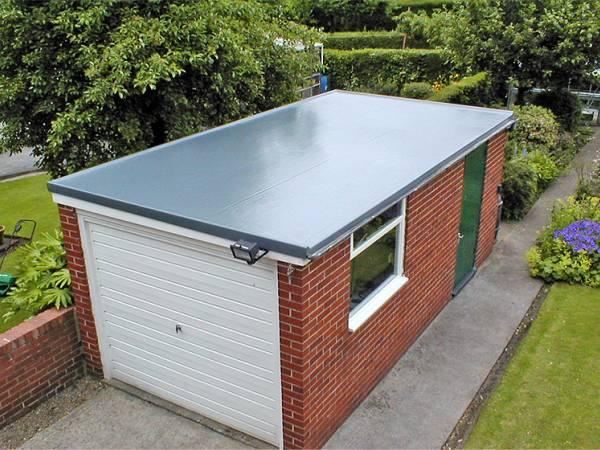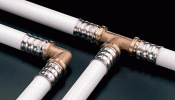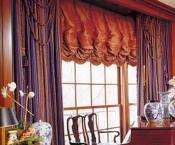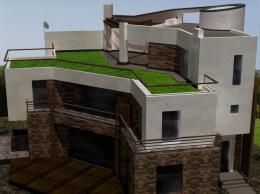Search
Login
Flat roof, what is it and where is it used, how and how to insulate a flat roof
Designing houses with a flat roof in developed countries is considered one of the promising construction options and is used to equip high-rise buildings, cottages, shopping centers and industrial buildings. In our country, this phenomenon is not common, but the whole blame is on the mentality of the Russian person, which was formed under the influence of stereotypes of classical construction.
Content
- Advantages of a flat roof and types depending on the operation
- Roof options depending on installation technology video
- Flat roof mounting technology
- Landscaping a flat roof - an innovative approach to architecture
Advantages of a flat roof and types depending on the operation
Installation of flat roofs is widely in demand in all types of construction. The construction of residential buildings and industrial facilities is increasingly not complete without the design of a flat roof, due to a number of its advantages.

The main of these advantages is the maximum protection of the building from excessive atmospheric precipitation, which is achieved due to the principle of flat roof construction. Speaking of secondary advantages (and for some people they sometimes come first), one can not help but mention that this type of roof provides the opportunity to obtain additional exploited area, which can be used for various purposes.

Depending on whether the operation of the area obtained from the flat roof is envisaged, several types of it are distinguished.
non-exploitable flat roof
The most budgetary option is an unexploited flat roof. It is possible to give preference to an unexploited roof if you do not plan to use it as an additional area. According to its consumer characteristics, it is not inferior to the exploited flat roof, and its affordable cost allows it to firmly enter into widespread consumption.

exploited flat roof
Despite this, the exploited version of the flat roof has received greater use.
Features of design moments, providing for the presence of an additional rigid base, allow the roof, designed for operation, to withstand loads of varying degrees. If you chose an exploited flat roof, then in the future you can use it as a territory for equipping a sports ground, tennis court, winter garden, parking lot or other areas for recreation and household needs. The installation technology of an exploited flat roof provides for large material investments, but the service life justifies the costs.
Flat roof options depending on installation technology
Depending on the installation technology, several types of flat roofs are also distinguished.
traditional type
The traditional version of the roof provides for installation, which is based on the use of thermal insulation materials. Materials intended for thermal insulation must comply with all qualitative characteristics, since they are subjected to changes in temperature and other destructive factors of a natural nature, and in the case of an exploited roof, and mechanical stresses.
inversion type
It is also necessary to consider the inverse type of flat roof. This will be especially relevant, since the installation of a roof mounted according to the inversion type requires exact observance of the technological conditions of installation. The complexity of its design does not give the roofer the right to make a mistake, since the repair of a multilayer structure is impossible without the complete opening of the entire ballast.

The inversion type of the roof device provides for laying the insulation on a layer of waterproofing materials, which are protected by the insulation from changing temperature conditions, ultraviolet radiation and mechanical factors. The insulation layer, in turn, is also protected from the harmful effects of the environment, which is ensured by laying the drainage layer and geotextiles. If additional loads are planned for the roof, for example, car parking, it is necessary to take care of the additional strengthening, which is achieved by laying paving slabs.

Flat roof technology
Separately, it is necessary to mention the slope of the flat roof. Calling it flat, you need to remember that this term is very relative. An ideally flat roof does not exist, and the most common installation option provides a slope of at least 3%. This nuance must be observed in view of the fact that the slope of the flat roof protects the waterproofing membrane from damage in the autumn-winter period.
Flat roof technology is represented by a multicomponent system, each level of which carries its own functional load. Typically, a flat roof structure is represented by five layers.

The first layer, which takes all the load, is called the base, and is represented by a concrete slab.
thermal insulation of flat roofs and materials for insulation
The second in a row is a thermal insulation layer, designed to protect the roof from temperature extremes. The main heaters for a flat roof are materials with fire safety, low heat conductivity and hygroscopicity, as well as vapor tightness. Most often, the role of insulation for a flat roof is played by mineral wool, which meets all the above requirements, but the use of polystyrene, polystyrene foam and sprayed polyurethane foam is not prohibited. Warming a flat roof can be produced at the construction stage, and already during this period it is necessary to make a heat engineering calculation taking into account the strength requirements for the roof.

waterproofing and mastic as the main material for waterproofing
The next, no less important step is the stage of waterproofing a flat roof, and accordingly the layer of waterproofing materials will be the third layer in the structure. It is designed to protect the building from excessive rain and moisture. The most common material used at this stage is liquid mastic, which after application undergoes certain physical and chemical transformations. The basis for the production of mastics is the use of resins of polyurethane origin with elasticity and hydrophobicity. They provide a certain level of polymerization of the material under the influence of air, as a result of which a coating is formed that resembles rubber in its structure. The technological advantage of this material is considered to be specific visible control over the application, thereby ensuring a minimum thickness of the roof structure, and high affinity for surfaces of various origins, combined with resistance to spectral radiation from the sun, make mastic an indispensable material for waterproofing.

final installation steps
The finishing elements in this multilayer construction are drainage, represented by a layer of gravel, which ensures water drainage, and an external coating, which can be achieved by laying materials of different hardness, most often these are roll materials or paving slabs.

Landscaping a flat roof - an innovative approach to architecture
An innovation in architecture was the use of roof coverings, the structure of which provides for greening the roof.

Green roofing is considered the lot of private homeowners, who often do not mind to stand out among the large gray mass. Roofing intended for the construction of houses that are internationally recognized as a work of art must be resistant to root structures and excessive moisture, since the design features of such creations include the accumulation of rain moisture, albeit with timely drainage. Using this innovative approach, you will become the owner of the building, the roof of which will become both decorative and functional.






